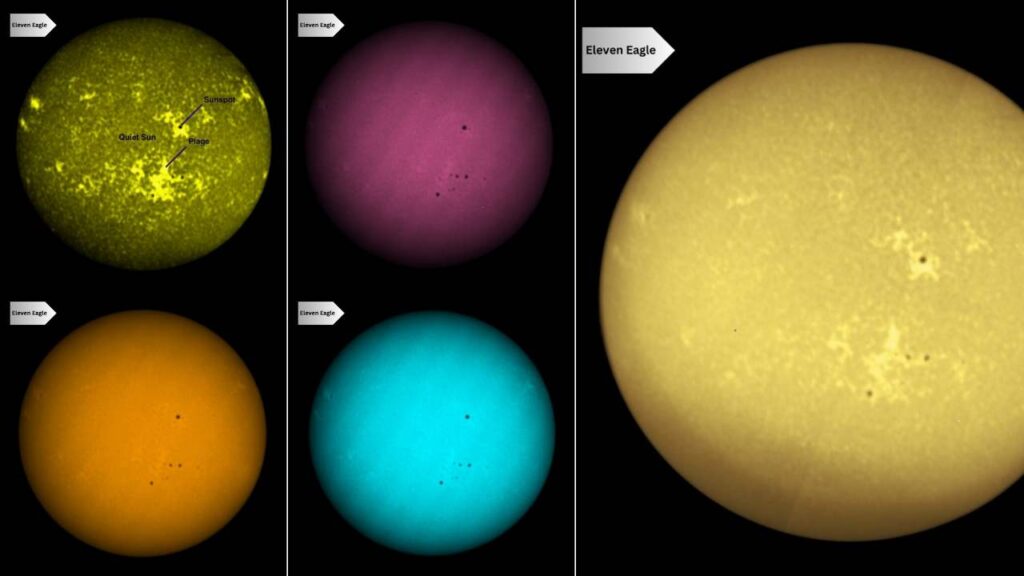ISRO’s Aditya-L1 spacecraft has captured images of the Sun in 11 different colors.

Aditya L1: After the success of Chandrayaan-3, ISRO launched Aditya-L1 to study the Sun. Now this same Aditya-L1 has done a great job. The Solar Ultraviolet Imaging Telescope (SUIT) on board this spacecraft has captured the Sun’s full disk photo for the first time. All these photos are from 200 to 400 nanometers wavelength. This is why the sun appears in 11 different colors in these photos.
The SUIT payload of Aditya-L1 became active on 20 November 2023. Now this telescope has taken photos of photosphere and chromosphere of sunlight. Photosphere is the surface of the Sun and chromosphere is the surface of the Sun and the thin outer atmosphere. The chromosphere extends up to 2000 km from the surface of the Sun.
Aditya-L1 Mission:
The SUIT payload captures full-disk images of the Sun in near ultraviolet wavelengthsThe images include the first-ever full-disk representations of the Sun in wavelengths ranging from 200 to 400 nm.
They provide pioneering insights into the intricate details… pic.twitter.com/YBAYJ3YkUy
— ISRO (@isro) December 8, 2023
The previous photo of the Sun was taken on December 6, 2023. But, it was the first light science photo. Now the spacecraft has taken full disk images of the Sun. That is, a photo of the part of the sun that is completely in front. These photos clearly show sunspots, plagues, and the quiescent part of the sun. Scientists will be able to study the Sun properly with the help of these photos.
When did Aditya L1 leave?
Along with the photo shared by Istro, it said that sunspot, black spot, quiet region of the sun can be seen through it. Aditya L1 set off on September 2 on a journey of 1.5 lakh kilometers to discover the secrets of the Sun. The Polar Satellite Vehicle Aditya L1 mission was launched from the Satish Dhawan Space Station in Sriharikota, Andhra Pradesh. Aditya L1 is likely to reach the Lagrange point by January 7, 2024. Istro activated the SUIT payload on 20 November 2023. This telescope first took the first photo on December 6, 2023. Now the first full disk image is taken. This will now help in studying the Sun’s photosphere and chromosphere.
The SUIT payload was jointly developed by these institutions:
Inter-University Center for Astronomy and Astrophysics (IUCAA) in Pune, Manipal Academy of Higher Education (MAHE), Center for Excellence in Space Science India (CESSI), Indian Institute of Astrophysics, Udaipur Solar Observatory, Tezpur SUIT has been jointly developed by the University and ISRO scientists.
Also read this:

